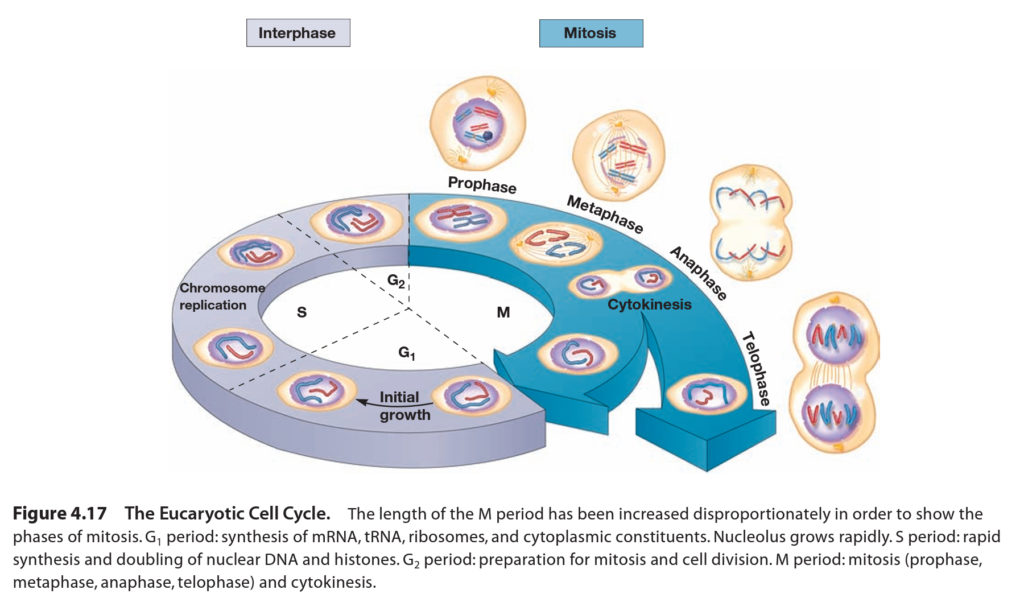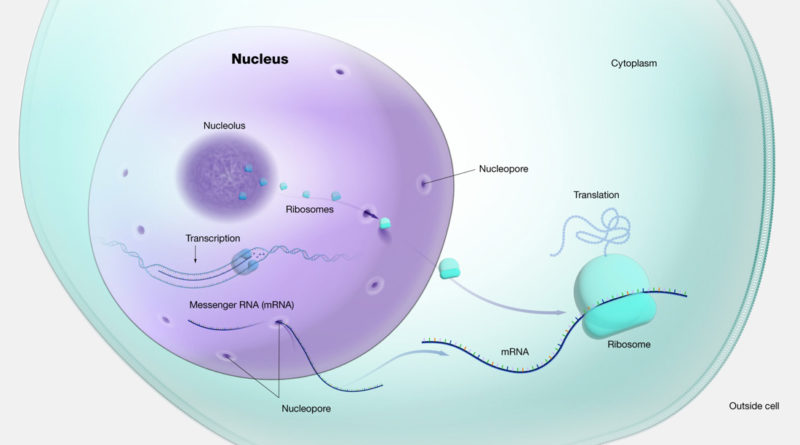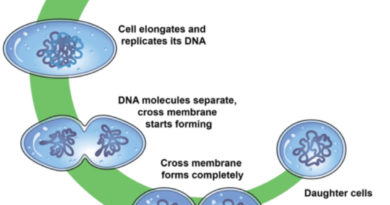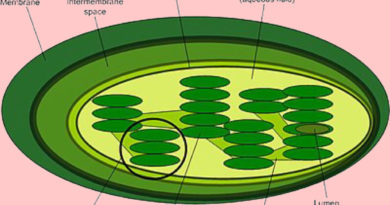The Nucleus And Cell Division 
Nucleus is a membrane bound and most visually prominent organelle in eukaryotic cells. Nucleus is exclusively present in eukaryotic cells and not found in prokaryotic cells.
It was discovered early in the study of cell structure and was shown by Robert Brown in 1831 to be a constant feature of eukaryotic cells.
The nucleus is the repository for the cell’s genetic information and is its control center.
Nucleus Structure
Nuclei are membrane-delimited spherical bodies about 5 to 7 micrometer in diameter. Dense fibrous material called chromatin can be seen within the nucleoplasm of the nucleus of a stained cell. This is the DNA – containing part of the nucleus.
In non dividing cells chromatin is dispersed, but it condenses during cell division to become visible as chromosomes. Some chromatin, the euchromatin, is loosely organized and contains those genes that are actively expressed. In contrast, heterochromatin is coiled more tightly, appears dark in the electron microscope, and is not genetically active most of the time.
The nucleus is bounded by a nuclear envelope, which is a complex structure consisting of inner and outer membranes separated by a 15 to 75 nm perinuclear space. At several point the envelope is continuous with the ER at several points and its outer membrane is covered with ribosomes. A network of intermediate filaments, called the nuclear laminate, is observed in animal cells. It lies against the inner surface of the envelope and support it. Chromatin usually is associated with the inner membrane.
Many nuclear pores are present on the nuclear envelop. These pores are made by fission of inner and outer membrane. Pores are about 70 nm in diameter and collectively occupy about 10 to 25% of the nuclear surface.
A complex ring like arrangement of granular and fibrous material called the annulus is located at the edge of each pore.
Nuclear pore act as a transport route between observed moving into the nucleus through the pores.
The most noticeable structure within the nucleus is the nucleolus. A nucleus may contain from one to many nucleoli. Nucleoli is not membrane bound but it is a complex organelle with separate granular and fibrillation regions. Nucleoli is present in non dividing cells but frequently disappears during mitosis.
The nucleolus plays a major role in ribosome synthesis. The nucleolar organizer DNA directs the production of ribosomal RNA (rRNA).
Mitosis and Meiosis
When a eukaryotic microorganism reproduces asexually, its genetic material must be duplicated and then separated so that each new nucleus can have a complete set of chromosomes. This process of nuclear division and chromosome distribution in eukaryotic cells is called mitosis.
Cell Cycle
The cell cycle is the total sequence of events in the growth-division cycle between the end of one division and the end of the next.

Cell growth takes place in the interphase, that portion of the cycle between periods of mitosis. Interphase is composed of three parts.The G1 period (gap 1 period) is a time of active synthesis of RNA, ribosomes, and other cytoplasmic constituents accompanied by considerable cell growth. This period is followed by the S period (synthesis period) in which DNA is replicated and double in quantity. Finally, there is a second gap, the G2 period, when the cell prepares for mitosis, the M period, by activities such as the synthesis of special division proteins. The total length if the cycle differs considerably between microorganism, usually due to the variation in the length of G1.



